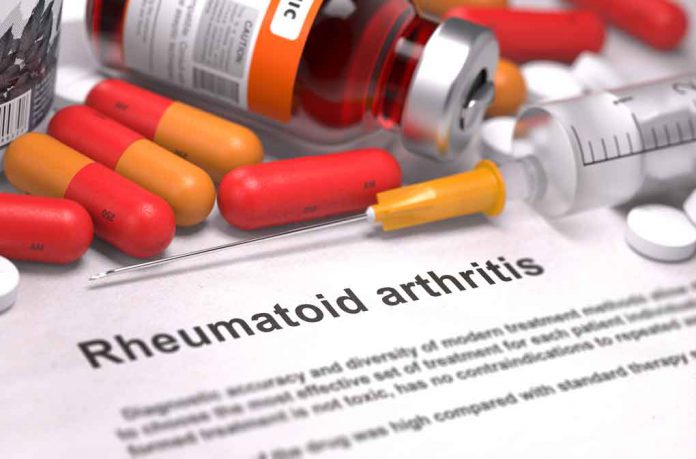
By 2030, 60% of Baby Boomers will be managing a chronic health condition. Sadly, across North America, rheumatoid arthritis is one of the most common diagnoses as people age into their 50s, 60s, 70s, and beyond — and it’s also one of the most painful.
Rheumatoid arthritis (RA) is a long-term, progressive, and disabling autoimmune disease that causes inflammation, swelling, and significant pain in and around the joints and other bodily organs. Typically, RA affects the hands and feet first, but it can occur and cause severe discomfort in virtually any joint.
By 2040, an estimated 78 million U.S. adults ages 18 years or older are projected to have arthritis — but 1.3 million have rheumatoid arthritis. In Canada, though 4.6 million adults over the age of 15 have arthritis, about one out of every 100 adult Canadians suffers from RA, which is about 300,000 people.
According to the Rheumatoid Arthritis Support Network, RA affects as much as 1% of the world’s population.
Though symptoms come and go and can be quite mild, during a flare-up, they can be extremely severe. Here are some symptoms of rheumatoid arthritis:
- Pain, swelling, and stiffness in more than one joint
- Weakness
- Symmetrical joint involvement
- Weight loss
- Joint deformity
- Loss of mobility and function
- Unsteadiness when walking
- Fever
- A general feeling of sickness
Unfortunately, RA cannot be cured, but it can be treated. The main way to combat RA symptoms and discomfort are through medications called DMARDS (disease-modifying anti-rheumatic drugs). These drugs prevent joint damage and include both non-biologics, which have been used for years, cause little-to-no side effects, and are safe; and biologics, which can be effective but could result in rare and serious side effects.
The global pharmaceutical market will reach $1.12 trillion by 2022. Despite this impressive fiscal growth, it still takes between 10 to 15 years to develop medications or vaccines that can combat serious health concerns. Thankfully, advanced research and technological innovation has lead more knowledge and improved strategies when it comes to addressing RA concerns.
According to Johns Hopkins Arthritis Center, the goal of RA treatment nowadays is to achieve the lowest possible level of arthritis activity, minimize joint damage, and enhance physical function and quality of life. Here are some of the most popular RA treatment options:
Non-steroidal Anti-inflammatory Agents (NSAIDS)
The major benefit of these agents is to cutdown on acute inflammation and alleviate pain, as well as improve bodily function. It’s important to note that these drugs do not alter the course of the RA disease or prevent joint damage.
Aspirin is the oldest drug of the non-steroidal class, but due to its anti-inflammatory serum levels, medical professionals have began using other NSAIDs. Proton therapy treatments are another form of NSAID treatment that typically takes 15 to 45 minutes, though the amount of time protons are delivered to the joint or body part is only around a minute or two.
Corticosteroids
Corticosteroids can be given orally, intravenously, intramuscularly, or injected directly into the joint. They have both immunoregulatory and anti-inflammatory activity and are great for treating early RA diagnosis. Side effects for this treatment include weight gain, increased blood sugar, increased blood pressure, avascular necrosis of bones, and an increased risk of cataracts.
Methotrexate
Methotrexate is typically used as a first DMARD agent for most patients suffering with RA. It has a rapid onset of action when administered therapeutically (between six and eight weeks), has a favorable toxicity profile, easy to administer, has good efficacy, and is relatively affordable. This treatment option is effective for reducing the warning signs and symptoms of RA, as well as hindering the progression of radiographic damage.
Some other RA treatment options include the following: Sulfasalazine, Leflunomide, Tumor Necrosis Factor Inhibitor, T-cell Costimulatory Blocking Agents, B cell Depleting Agents, and surgical approaches.
Finally, let’s take a look at RA risk factors. People with a higher risk of developing RA individuals who:
- Smoke tobacco or whose parents smoked when they were children
- Are aged 60 years old or older
- Are obese
- Are female
- Have never given birth
- Have certain genetic traits






